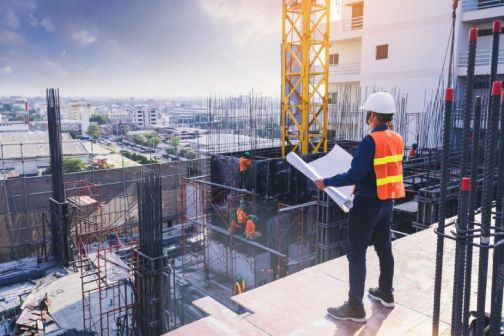What are the four new compliance metrics embedded in the updated 2022 Part L?

The four new compliance metrics introduced in the 2022 uplifted Part L were not all new. Carbon emission reductions are a term we are now used to, but the targets that came into law on June 15th 2022 have become tighter. The four targets we are looking at in this blog are:
- Target Primary Energy Rate (TPER)
- Target Emission Rate (TER)
- Target Fabric Energy Efficiency (TFEE)
- Minimum standards for fabric and fixed building services
Target Primary Energy Rate (TPER)
This is a brand new addition to Part L, however, the term primary energy was introduced some time ago and its introduction into Building Regulations was expected. It sets a target for the amount of primary energy a building requires for its space heating, hot water, lighting, ventilation and cooling requirements. A unit of 'primary energy' reflects how much raw fuel is used to generate a unit of final energy. This means that you will need to consider the type of energy used to power the systems in a house. Specifying renewable technologies is a good way of getting compliance benefits when looking to achieve the TPER due to their high efficiency. For example, the primary energy factor (PEF) for electricity is 1.501, so for every unit of energy used in the home, 1.501 units of raw, original, or ‘primary’ energy must be generated. Heat pumps are a great way to achieve TPER because their COP effectively reverses this effect. Let's take, for example, a monobloc heat pump or split source heat pump installed in a dwelling with a COP of 3. The heat pump will use 1.501 units of primary energy, to 1 unit into the meter, and generate 3 units of heat from it. Find out more about TPER in the second blog in our series: 'What is primary energy and how can we achieve primary targets?'.
Target Emission Rate (TER)
This is a long-established target in Part L and aims to limit the carbon emissions associated with the house. Each time Part L is changed, the government looks to reduce the TER. For Part L 2021, a weighted average reduction of 31% in CO2 emissions is required over that of Part L 2013. As well as being influenced by the design's energy efficiency, CO2 emissions, as with primary energy, are also affected by fuel choice. Due to the continued decarbonisation of the grid, electricity now has the lowest carbon emission factor when compared with gas and oil. We are looking at TER and how the continued grid decarbonisation affects the specification of space heating, hot water, and ventilation technologies in our blog: 'How do we design and build homes to achieve the 31% carbon savings in today's house?'.

Target Fabric Energy Efficiency (TFEE)
Part L has always promoted a 'fabric first' approach to energy efficiency and the TFEE ensures that any dwellings built have a thermally efficient fabric. This is achieved by combining low U-values, good thermal bridging detailing, and low air permeability rates to minimise heat loss through the building's fabric. In the Future Homes Standard: Changes to Part L and Part F of the Building Regulations for new dwellings consultation, it was thought that the government would remove this target. However, after feedback, it has been retained. Our blog 'Which space heating and hot water technologies will work with the fabric efficiency standards uplifted by Part L' considers the relationship between TFEE and HVAC technologies.
Minimum standards for fabric and fixed building services
Minimum standards are needed to ensure that there are no weak spots left in either building or fabric services that may undermine the efficient running of a chosen design.
Part L states that building services must be provided that are 'energy efficient to a reasonable standard' and describes the minimum efficiencies for different heating systems in detail. It also has guidance to ensure that the systems are appropriately sized and have controls that will assist with their efficient operation.
The minimum U-values for the different fabric elements have been significantly tightened and the new fabric and building services minimum requirements raise the baseline specification to give a building the best chance of achieving compliance with a robust, holistic design. Here is a summary of the minimum standard showing more detail on the fabric and services requirements:
How quickly did construction have to adapt to these new metrics?
The 12-month transitional period is now over. It was in place until the 15th of June 2023 and meant that projects granted planning permission before the implementation date could complete their build without having to redesign buildings to reflect the new regulations.
For the first time, these transitional arrangements were on a plot-by-plot basis. It meant that the construction of every individual building or house would need to have started before the end of the transitional period. Those which had not started construction will need to be updated to the new regulations.
We have years of experience understanding regulatory changes and responding to government consultations. If you want to know how these new metrics may affect your project, contact one of our HVAC specialists. If you want to learn more about regulatory changes, download supporting materials, or would like to book a presentation, visit our pages dedicated to Building Regulations changes and SAP10.2 modelling.








